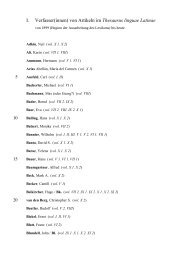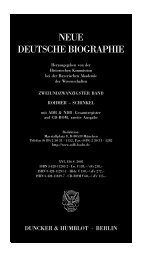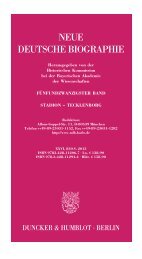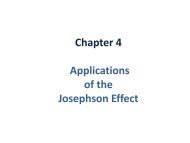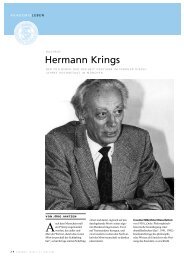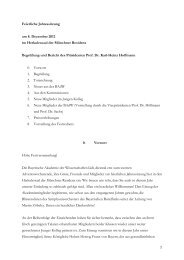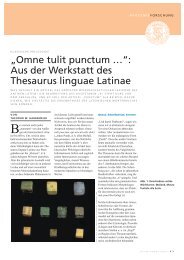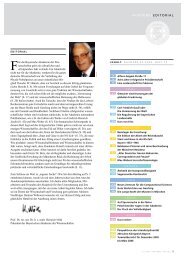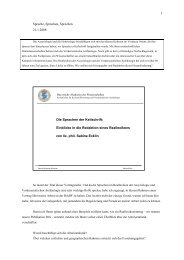Sampling the phase diagram of the cuprate superconductors - DFG ...
Sampling the phase diagram of the cuprate superconductors - DFG ...
Sampling the phase diagram of the cuprate superconductors - DFG ...
You also want an ePaper? Increase the reach of your titles
YUMPU automatically turns print PDFs into web optimized ePapers that Google loves.
<strong>Sampling</strong> <strong>the</strong> <strong>phase</strong> <strong>diagram</strong> <strong>of</strong> <strong>the</strong> <strong>cuprate</strong> <strong>superconductors</strong><br />
Andreas Erb, Michael Lambacher 1<br />
Introduction<br />
In 2004 <strong>the</strong> <strong>DFG</strong> (Deutsche Forschungsgemeinschaft) founded <strong>the</strong> research unit FOR 538: ” Doping Dependence<br />
<strong>of</strong> Phase Transitions and Ordering Phenomena in Cuprate Superconductors ”, which consisted<br />
<strong>of</strong> 7 different projects, one <strong>of</strong> which is ”Crystal Growth <strong>of</strong> p and n-doped <strong>cuprate</strong> <strong>superconductors</strong>”.<br />
Goal <strong>of</strong> this project is <strong>the</strong> growth and characterization <strong>of</strong> high purity single crystals <strong>of</strong> <strong>the</strong> high temperature<br />
<strong>superconductors</strong> to provide samples for different spectroscopic experiments within <strong>the</strong> ”Research<br />
Unit High Temperature Superconductivity ”. By <strong>the</strong> end <strong>of</strong> <strong>the</strong> year 2006 <strong>the</strong> renewed proposal for <strong>the</strong><br />
Research united was not only reviewed positively again, but was even enlarged and now consists <strong>of</strong> 9<br />
groups. The project crystal growth within <strong>the</strong> research unit is <strong>of</strong> particular importance in that sense, that<br />
it provides <strong>the</strong> common sample basis to <strong>the</strong> different experimental projects within <strong>the</strong> research unit. Only<br />
such a common sample basis <strong>of</strong> high quality single crystals <strong>of</strong> <strong>the</strong> <strong>cuprate</strong>s makes <strong>the</strong> comparison <strong>of</strong> <strong>the</strong><br />
results obtained by <strong>the</strong> various experimental techniques reliable.<br />
Sample space<br />
In order to cover <strong>the</strong> whole <strong>phase</strong> <strong>diagram</strong> <strong>of</strong> <strong>the</strong> high temperature <strong>superconductors</strong>, which is one <strong>of</strong> <strong>the</strong><br />
central ideas <strong>of</strong> this research unit, crystals with well defined and homogeneous doping <strong>of</strong> both, <strong>the</strong> p and<br />
n-doped compounds need to be grown. On <strong>the</strong> hole doped side <strong>of</strong> <strong>the</strong> <strong>phase</strong> <strong>diagram</strong> we focused on <strong>the</strong><br />
systems <strong>of</strong> YBa 2 Cu 3 O 7−δ and Bi 2 Sr 2 CaCu 2 O 8 . There are restrictions in <strong>the</strong> accessible doping regime<br />
for <strong>the</strong> YBa 2 Cu 3 O 7−δ even when co-doping with Ca is applied (see Fig. 1).<br />
Figure 1: Accessible regions <strong>of</strong> <strong>the</strong> <strong>phase</strong> <strong>diagram</strong> for <strong>the</strong> different compounds <strong>of</strong> <strong>the</strong> high temperature <strong>superconductors</strong><br />
For <strong>the</strong> Bi 2 Sr 2 CaCu 2 O 8 system one is actually limited to a relatively small region around optimal doping.<br />
For this reason we have started to grow single crystals <strong>of</strong> <strong>the</strong> La 2−x Sr x CuO 4 system, since <strong>the</strong>y can be<br />
used to access <strong>the</strong> reminder part <strong>of</strong> <strong>the</strong> <strong>phase</strong> <strong>diagram</strong> as well as it is possible to access <strong>the</strong> whole<br />
doping range <strong>of</strong> <strong>the</strong> hole doped side by using one compound only. Moreover, <strong>the</strong>y allow a more direct<br />
1 This work is supported by <strong>the</strong> Deutsche Forschungsgemeinschaft ( <strong>DFG</strong> FOR 538.)<br />
1
Figure 2: Single crystal <strong>of</strong> La 2−x Sr x CuO 4 grown in <strong>the</strong> mirror furnace at WMI. The last about 6 cm on <strong>the</strong> left end<br />
<strong>of</strong> <strong>the</strong> sample are formed by a single crystallite.<br />
comparison <strong>of</strong> <strong>the</strong> n- and p-doped side <strong>of</strong> <strong>the</strong> <strong>phase</strong> <strong>diagram</strong>, due to <strong>the</strong> similarity <strong>of</strong> both <strong>the</strong> critical<br />
temperature and <strong>the</strong> structure with <strong>the</strong> electron doped 214-compounds.<br />
For <strong>the</strong> electron doped side <strong>of</strong> <strong>the</strong> <strong>phase</strong> <strong>diagram</strong> only 214-compounds are available to probe <strong>the</strong><br />
<strong>phase</strong> <strong>diagram</strong>. We concentrated our efforts on <strong>the</strong> crystal growth <strong>of</strong> Pr 2−x Ce x CuO 4 ,Nd 2−x Ce x CuO 4<br />
Sm 2−x Ce x CuO 4 or mixtures such as LaPr 1−x Ce x CuO 4 .<br />
Research Status and Own Previous Work<br />
There are several families <strong>of</strong> <strong>cuprate</strong> <strong>superconductors</strong>. However, by materials or technical reasons <strong>the</strong>re<br />
are only a few families that are suitable for achieving <strong>the</strong> goals <strong>of</strong> our research unit. There are <strong>the</strong><br />
following compounds <strong>of</strong> <strong>the</strong> high temperature <strong>superconductors</strong>, from which a set <strong>of</strong> high quality single<br />
crystals with different doping level can be produced:<br />
• YBa 2 Cu 3 O 7−δ :<br />
Due to <strong>the</strong> peculiarities <strong>of</strong> <strong>the</strong> <strong>phase</strong> <strong>diagram</strong> (<strong>the</strong> small solubility in <strong>the</strong> solvent) <strong>of</strong> <strong>the</strong> 123-<br />
compounds, high quality crystals <strong>of</strong> <strong>the</strong> 123-compounds without solvent inclusions have to be<br />
grown in a crucible. Due to <strong>the</strong> highly reactive melts <strong>of</strong> <strong>the</strong> CuO-BaO flux system all usual refractory<br />
crucible materials are heavily corroded by <strong>the</strong> flux and <strong>the</strong> crystals grown in such experiments<br />
were contaminated by <strong>the</strong> crucible material. The problem has been solved with <strong>the</strong> development<br />
<strong>of</strong> <strong>the</strong> adapted crucible material BaZrO 3 [1, 2], in which crystals with a purity <strong>of</strong> up to 99.995 %<br />
can be grown. In general it should be remarked that due to <strong>the</strong> perfection <strong>of</strong> <strong>the</strong> available crystals<br />
<strong>the</strong> stoichiometric compound YBa 2 Cu 3 O 7−δ would be <strong>the</strong> ideal sample system for a systematic<br />
study <strong>of</strong> high temperature <strong>superconductors</strong>. However, unfortunately some regions in <strong>the</strong> overdoped<br />
range can not be accessed by this compound. Fur<strong>the</strong>rmore, YBa 2 Cu 3 O 7−δ does not cleave<br />
easily, which makes <strong>the</strong> use <strong>of</strong> this compound more complicated for techniques requiring cleaved<br />
surfaces such as angle resolved photo emission.<br />
• Bi-2212 (Bi 2 Sr 2 CaCu 2 O 8 ):<br />
Besides <strong>the</strong> 123-compounds, <strong>the</strong> Bi-based family <strong>of</strong> high temperature <strong>superconductors</strong> with 3 different<br />
compounds are interesting candidates for sample systems for <strong>the</strong> coordinated work within<br />
our research unit. The family consists <strong>of</strong> <strong>the</strong> following three members: <strong>the</strong> single layer compound<br />
Bi 2 Sr 2 CuO 6 with a transition temperature <strong>of</strong> T c up to 40 K, <strong>the</strong> double layer compound<br />
Bi 2 Sr 2 CaCu 2 O 8 with T c around 96-98 K and <strong>the</strong> 3-layer compound Bi 2 Sr 2 Ca 2 Cu 3 O 10+δ with a<br />
T c <strong>of</strong> around 110 K. While <strong>the</strong> first crystals <strong>of</strong> <strong>the</strong>se compounds have been grown from <strong>the</strong> flux<br />
with <strong>the</strong> same problem <strong>of</strong> crucible corrosion like in YBa 2 Cu 3 O 7−δ , meanwhile <strong>the</strong> development<br />
<strong>of</strong> crystal growth in mirror furnaces has made <strong>the</strong> use <strong>of</strong> crucibles obsolete and has led to a considerable<br />
improvement <strong>of</strong> <strong>the</strong> crystal quality in <strong>the</strong>se systems. Never<strong>the</strong>less, <strong>the</strong> crystal quality is<br />
2
limited by <strong>the</strong> intergrowth <strong>of</strong> <strong>the</strong> three superconducting <strong>phase</strong>s and by a partial solubility <strong>of</strong> Bi on<br />
Sr sites. The optimization <strong>of</strong> <strong>the</strong> growth parameters [3–6] has led to a pronounced improvement<br />
<strong>of</strong> <strong>the</strong> crystal quality in <strong>the</strong> last years. In particular, for <strong>the</strong> double layer compound Bi-2212 high<br />
quality crystals <strong>of</strong> several grams and with low defect concentration can be grown using <strong>the</strong> zone<br />
melting technique in a mirror furnace. Due to <strong>the</strong> fact that this compound cleaves very easily perpendicular<br />
to <strong>the</strong> c-direction, samples <strong>of</strong> this system are ideal for angle resolved photo emission<br />
spectroscopy and o<strong>the</strong>r surface sensitive spectroscopies used within <strong>the</strong> research unit. However,<br />
as already stated above crystals <strong>of</strong> large size and good crystalline quality are only obtained in a<br />
narrow region around optimal doping.<br />
• 214-Systems (La 2−x Sr x CuO 4 ,Nd 2−x Ce x CuO 4 and Pr 2−x Ce x CuO 4 ):<br />
The so-called 214-systems with <strong>the</strong> compounds La 2−x Ba x CuO 4 and La 2−x Sr x CuO 4 have been<br />
<strong>the</strong> first <strong>cuprate</strong> <strong>superconductors</strong> discovered. [7] Starting from <strong>the</strong> antiferromagnetic compounds<br />
Re 2 CuO 4 doping with Sr 2+ on <strong>the</strong> hole doped side or with Ce 4+ on <strong>the</strong> electron doped side leads<br />
to <strong>the</strong> formation <strong>of</strong> solid solutions, which become superconducting at certain doping levels. The<br />
formation <strong>of</strong> simple solid solutions in <strong>the</strong>se compounds makes <strong>the</strong>m in principle very attractive<br />
as a basis <strong>of</strong> a sample set. However, on <strong>the</strong> o<strong>the</strong>r hand, <strong>the</strong> formation <strong>of</strong> solid solutions makes it<br />
quite difficult or even impossible to grow big homogeneous samples in crucibles. This is caused<br />
by <strong>the</strong> fact that <strong>the</strong> distribution coefficient <strong>of</strong> <strong>the</strong> dopant is unequal to unity, which obviously leads<br />
to concentration gradients <strong>of</strong> <strong>the</strong> dopant during <strong>the</strong> growth process. Fortunately, this problem<br />
has been greatly overcome by <strong>the</strong> development <strong>of</strong> <strong>the</strong> TSFZ-method (travelling solvent floating<br />
zone). With this method large and homogeneous crystals <strong>of</strong> <strong>the</strong> 214-compounds can be grown (see<br />
Fig. 2), especially in long lasting growth experiments, when <strong>the</strong> equilibrium state for <strong>the</strong> dopant<br />
concentration has been reached within <strong>the</strong> solvent.<br />
– La 2−x Sr x CuO 4 :<br />
This hole doped compound has some particular advantages compared to <strong>the</strong> o<strong>the</strong>r hole doped<br />
systems such as YBa 2 Cu 3 O 7−δ and Bi 2 Sr 2 CaCu 2 O 8 , which are <strong>the</strong> most promising systems<br />
for <strong>the</strong> sample set on <strong>the</strong> hole doped side <strong>of</strong> <strong>the</strong> <strong>phase</strong> <strong>diagram</strong>. Firstly, <strong>the</strong> doping range<br />
that is in principle accessible with this compound extends from <strong>the</strong> undoped antiferromagnet<br />
to <strong>the</strong> overdoped metal. In this way, basically <strong>the</strong> whole doping regime <strong>of</strong> <strong>the</strong> hole doped<br />
side <strong>of</strong> <strong>the</strong> <strong>phase</strong> <strong>diagram</strong> <strong>of</strong> <strong>the</strong> <strong>cuprate</strong>s can be accessed by using only a single compound.<br />
Secondly, <strong>the</strong> critical temperature as well as <strong>the</strong> structure is similar to <strong>the</strong> electron doped<br />
compounds Nd 2−x Ce x CuO 4 and Pr 2−x Ce x CuO 4 , which are considered in this project to serve<br />
as <strong>the</strong> sample basis for <strong>the</strong> study <strong>the</strong> electron doped side <strong>of</strong> <strong>the</strong> <strong>phase</strong> <strong>diagram</strong> <strong>of</strong> <strong>the</strong> high<br />
T c <strong>superconductors</strong>. Certainly, <strong>the</strong>re are also some shortcomings for this compound. In<br />
particular, compared to <strong>the</strong> Bi 2 Sr 2 CaCu 2 O 8 system it is much more difficult to cleave <strong>the</strong>m,<br />
<strong>the</strong>reby hampering <strong>the</strong>ir use for ARPES experiments. Never<strong>the</strong>less, first experiments have<br />
shown that it is possible to cleave <strong>the</strong>m. For <strong>the</strong> Raman and infrared spectroscopies first<br />
experiments have shown that measurements are possible using single crystals with extremely<br />
fine polished surfaces. Finally, since large La 2−x Sr x CuO 4 crystals with a weight <strong>of</strong> several<br />
grams (see Fig. 2) can be produced in very good quality, <strong>the</strong>y are ideal samples for <strong>the</strong><br />
inelastic neutron scattering experiments.<br />
– Nd 2−x Ce x CuO 4 and Pr 2−x Ce x CuO 4 :<br />
Similar arguments as for La 2−x Sr x CuO 4 also apply for <strong>the</strong> electron doped compounds. Upon<br />
doping with Ce 4+ solid solution crystals are formed up to <strong>the</strong> solubility limit <strong>of</strong> <strong>the</strong> different<br />
compounds. However, superconductivity exists only in a narrow range <strong>of</strong> cerium concentrations,<br />
e.g. between x = 0.14 and x = 0.17 in <strong>the</strong> Nd 2−x Ce x CuO 4 compound [8]. The<br />
width <strong>of</strong> this doping regime is known to depend on <strong>the</strong> rare earth ion. In <strong>the</strong>se materials one<br />
<strong>of</strong> <strong>the</strong> most striking properties is that Ce-doping alone is insufficient. In addition, removal<br />
3
<strong>of</strong> oxygen is a necessary step to achieve superconducting samples. Usually this is done by<br />
annealing <strong>the</strong> samples at elevated temperatures in a low pressure oxygen environment. The<br />
way this reduction procedure is performed can lead to different transition temperatures [9]<br />
and ultimately can lead to unstable samples that decompose with time. The recipes for both<br />
<strong>the</strong> growth <strong>of</strong> <strong>the</strong> crystals as well as for oxygen reduction [9–12] differ between <strong>the</strong> different<br />
groups working in this field. The preparation <strong>of</strong> big, well-defined and stable crystals <strong>of</strong> <strong>the</strong>se<br />
compounds was and partially remains one <strong>of</strong> <strong>the</strong> most challenging parts <strong>of</strong> our work.<br />
– LaPr 1−x Ce x CuO 4 :<br />
Since <strong>the</strong> magnetic moment <strong>of</strong> Nd 3+ hampers <strong>the</strong> use <strong>of</strong> <strong>the</strong> Nd-214 compound in various experiments<br />
and a solubility limit <strong>of</strong> x = 0.15 for Ce 4+ has been found in <strong>the</strong> Pr-214 compound,<br />
<strong>the</strong> system <strong>of</strong> LaPr 1−x Ce x CuO 4 might be a solution to access <strong>the</strong> fur<strong>the</strong>r overdoped region<br />
<strong>of</strong> <strong>the</strong> electron doped side <strong>of</strong> <strong>the</strong> <strong>phase</strong> <strong>diagram</strong>. The superconducting region within this<br />
system seems to have a broader doping range and nei<strong>the</strong>r <strong>the</strong> La nor Pr ions have a magnetic<br />
moment. Therefore, we will also try to grow single crystals <strong>of</strong> LaPr 1−x Ce x CuO 4 .<br />
Own Previous Work<br />
Within <strong>the</strong> last 3 years <strong>the</strong> crystal growth laboratory at <strong>the</strong> Wal<strong>the</strong>r-Meißner-Institut has been fur<strong>the</strong>r<br />
extended and <strong>the</strong> applied crystal growth techniques have been considerably refined to improve <strong>the</strong> quality<br />
<strong>of</strong> <strong>the</strong> fabricated single crystals. Moreover, <strong>the</strong> methods for <strong>the</strong> characterization <strong>of</strong> <strong>the</strong> single crystals have<br />
been improved and broadened. For example, <strong>the</strong> possibility to orient <strong>the</strong> crystals <strong>of</strong> <strong>the</strong> 214-compounds<br />
has been brought to high perfection. It is possible to orient to a precision <strong>of</strong> better <strong>the</strong>n 0.5 ◦ and to ultra<br />
fine polish <strong>the</strong> surfaces to a perfection that Raman and infrared spectroscopies can be performed on such<br />
samples. This important work has been performed using also <strong>the</strong> facilities <strong>of</strong> <strong>the</strong> crystal laboratory <strong>of</strong> <strong>the</strong><br />
Department <strong>of</strong> Physics (TUM), which is headed by A. Erb.<br />
The production <strong>of</strong> <strong>the</strong> crucially important BaZrO 3<br />
crucibles has been improved, leading to a higher<br />
success rate <strong>of</strong> <strong>the</strong> growth <strong>of</strong> <strong>the</strong> 123-compounds<br />
and thus to a higher output <strong>of</strong> samples. For <strong>the</strong><br />
growth process both flux growth in crucibles and<br />
crucible free growth using <strong>the</strong> TSFZ-technique<br />
have been applied. The rapid progress in <strong>the</strong> improvement<br />
<strong>of</strong> growth techniques for known materials<br />
systems as well as in <strong>the</strong> development<br />
<strong>of</strong> novel growth methods was only possible due<br />
to <strong>the</strong> broad expertise and long standing experience<br />
available at <strong>the</strong> WMI. The head <strong>of</strong> <strong>the</strong> crystal<br />
growth group is well known for his expertise<br />
in crystal growth <strong>of</strong> <strong>the</strong> high temperature <strong>superconductors</strong><br />
and has made major innovations<br />
in this field such as <strong>the</strong> development <strong>of</strong> <strong>the</strong> flux<br />
growth method <strong>of</strong> YBa 2 Cu 3 O 7−δ out <strong>of</strong> BaZrO 3 -<br />
crucibles [1, 2]. Without any doubt this method<br />
Figure 3: Transition curves <strong>of</strong> various La 2−x Sr x CuO 4 single<br />
crystals.The optimally doped one consists <strong>of</strong> a 588 mg<br />
(about 6 mm long disc) heavy piece <strong>of</strong> <strong>the</strong> single crystal<br />
<strong>of</strong> La 2−x Sr x CuO 4 , shown in Fig.2<br />
led to <strong>the</strong> crystals <strong>of</strong> highest purity for this compound. This method, which so far has been accomplished<br />
only by a few o<strong>the</strong>r groups worldwide, meanwhile has been developed to <strong>the</strong> standard method<br />
for <strong>the</strong> growth <strong>of</strong> YBa 2 Cu 3 O 7−δ crystals with highest purity. Moreover, several special methods to homogenize<br />
<strong>the</strong> oxygen distribution and thus <strong>the</strong> doping homogeneity in <strong>the</strong> samples have been developed.<br />
These developments and <strong>the</strong> resulting improved sample quality had considerable effects on <strong>the</strong> physical<br />
properties <strong>of</strong> <strong>the</strong> samples, like for instance on <strong>the</strong> flux pinning [13] or <strong>the</strong> general behavior <strong>of</strong> <strong>the</strong> vortex<br />
4
Figure 4: Normalized ac susceptibility plotted versus temperature for several Nd 2−x Ce x CuO 4−δ (left) and<br />
Pr 2−x Ce x CuO 4−δ (right) single crystals with different doping level.<br />
state [14–16] <strong>of</strong> <strong>the</strong> high temperature <strong>superconductors</strong>. The basis <strong>of</strong> <strong>the</strong>se developments was an intensive<br />
study <strong>of</strong> oxygen diffusion [17, 18] and oxygen ordering.<br />
For <strong>the</strong> o<strong>the</strong>r compounds <strong>the</strong> TSFZ technique has been used for <strong>the</strong> growth <strong>of</strong> single crystals and brought<br />
to high perfection. In particular, <strong>the</strong> use <strong>of</strong> different values <strong>of</strong> <strong>the</strong> oxygen partial pressure for <strong>the</strong> growth<br />
atmosphere during <strong>the</strong> growth <strong>of</strong> crystals with different doping concentrations has led to much more<br />
stable growth conditions and thus to a higher perfection (typical values <strong>of</strong> <strong>the</strong> mosaic spread are below<br />
0.07 ◦ for <strong>the</strong> electron doped 214-compounds and 0.03 ◦ for La 2−x Sr x CuO 4 ) and bigger size (up to 6 grams<br />
in <strong>the</strong> case <strong>of</strong> La 2−x Sr x CuO 4 ) <strong>of</strong> <strong>the</strong> crystals.<br />
Results<br />
In <strong>the</strong> following we summarize <strong>the</strong> status achieved within <strong>the</strong> first period <strong>of</strong> <strong>the</strong> project for <strong>the</strong> growth <strong>of</strong><br />
<strong>the</strong> various high-T c compounds .<br />
• YBa 2 Cu 3 O 7−δ<br />
We have grown Ca-doped Y 1−x Ca x Ba 2 Cu 3 O 7−δ crystals with various doping concentration from<br />
<strong>the</strong> undoped (x = 0) compound up to a Ca-concentration <strong>of</strong> x = 0.14 in intervals <strong>of</strong> 0.02. These<br />
crystals have been used in various experiments within and outside [19] <strong>of</strong> <strong>the</strong> research unit. These<br />
studies (Raman and infrared spectroscopy) were mainly focussed on <strong>the</strong> underdoped region δ= 1<br />
and have brought new insight in <strong>the</strong> phenomena <strong>of</strong> <strong>the</strong> formation <strong>of</strong> stripes in this compound.<br />
• Bi 2 Sr 2 CaCu 2 O 8<br />
For <strong>the</strong> Bi 2 Sr 2 CaCu 2 O 8 system <strong>the</strong> main activity was dedicated to <strong>the</strong> growth <strong>of</strong> Ni- and Zn-doped<br />
samples, which have been used again in various activities within <strong>the</strong> research group [20]. These<br />
crystals reach several cm in length and about 8 mm in diameter and can <strong>the</strong>refor also be used in<br />
neutron experiments. Upon doping with Yttrium on <strong>the</strong> Ca-site <strong>the</strong> crystals tend to become smaller<br />
in size and <strong>the</strong> superconducting transitions, which are sharp for <strong>the</strong> undoped system as well as for<br />
Ni-doped samples, tend to become broader with increasing Y-doping. This indicates a spatially<br />
inhomogeneous distribution <strong>of</strong> <strong>the</strong> Y dopant atoms. To improve <strong>the</strong> situation, probably <strong>the</strong> use <strong>of</strong><br />
different oxygen partial pressure during growth might lead to more homogeneous samples with<br />
narrower superconducting transition. To achieve this improvement is especially important for <strong>the</strong><br />
ARPES experiments on <strong>the</strong> underdoped side <strong>of</strong> <strong>the</strong> <strong>phase</strong> <strong>diagram</strong>.<br />
5
Figure 5: Transition temperatures for various RE 2−x Ce x CuO 4 single crystals.<br />
• 214-systems: La 2−x Sr x CuO 4 ,Nd 2−x Ce x CuO 4 and Pr 2−x Ce x CuO 4<br />
Within <strong>the</strong> first period <strong>of</strong> <strong>the</strong> project extensive work on <strong>the</strong> crystal growth <strong>of</strong> <strong>the</strong> 214-compounds<br />
has been performed. Especially <strong>the</strong> growth <strong>of</strong> high quality 214-single crystals on <strong>the</strong> electron<br />
doped side <strong>of</strong> <strong>the</strong> <strong>phase</strong> <strong>diagram</strong> is very challenging as has already been outlined above. In our<br />
systematic study <strong>of</strong> <strong>the</strong> growth process we learned that depending on <strong>the</strong> desired doping level an<br />
adapted oxygen partial pressure has to be used for <strong>the</strong> growth atmosphere. This led to a much<br />
better stability <strong>of</strong> <strong>the</strong> growth conditions and, in turn, to a higher perfection and larger size <strong>of</strong> <strong>the</strong><br />
crystals.<br />
• La 2−x Sr x CuO 4<br />
Our work on <strong>the</strong> La 2−x Sr x CuO 4 compound was started only in <strong>the</strong> 3rd year <strong>of</strong> <strong>the</strong> first project<br />
period. Never<strong>the</strong>less, a rapid progress in <strong>the</strong> crystal growth <strong>of</strong> this compound was possible due to<br />
<strong>the</strong> broad experience with <strong>the</strong> electron doped 214-systems. Already <strong>the</strong> first experiments have led<br />
to very big (several grams) and homogeneous single crystals <strong>of</strong> this compound (see Fig. 2). The<br />
crystals with optimal doping have a transition temperature <strong>of</strong> T c = 37.5 K with a transition width<br />
<strong>of</strong> less than 1 K [21](see Fig. 3). Up to now we have produced crystals in <strong>the</strong> doping range <strong>of</strong><br />
x = 0, 0.15, 0.2, 0.25. Crystals <strong>of</strong> <strong>the</strong> optimally doping have been distributed to various members<br />
<strong>of</strong> <strong>the</strong> research unit and abroad. They are currently under investigation.<br />
• Nd 2−x Ce x CuO 4 ,Pr 2−x Ce x CuO 4<br />
Single crystals <strong>of</strong> <strong>the</strong> compounds Nd 2−x Ce x CuO 4 and Pr 2−x Ce x CuO 4 have been successfully<br />
grown within <strong>the</strong> first period <strong>of</strong> <strong>the</strong> project. The stability <strong>of</strong> <strong>the</strong> growth conditions have been<br />
found to strongly depend on oxygen partial pressure and doping for <strong>the</strong>se compounds. After optimization<br />
<strong>of</strong> <strong>the</strong> growth conditions we reproducibly obtain large single crystals <strong>of</strong> <strong>the</strong>se compounds.<br />
For optimally doped samples <strong>of</strong> Nd 2−x Ce x CuO 4 and Pr 2−x Ce x CuO 4 <strong>the</strong> maximum transition temperatures<br />
are T c = 23.5 K and T c = 25.5 K, respectively, which are <strong>the</strong> highest T c values reported<br />
so far [22]. In both cases <strong>the</strong> transition width was only about 1 K (see Fig. 4). Crystals <strong>of</strong> <strong>the</strong><br />
whole series <strong>of</strong> Nd 2−x Ce x CuO 4 and Pr 2−x Ce x CuO 4 compounds from <strong>the</strong> antiferromagnet up to<br />
<strong>the</strong> solubility limit <strong>of</strong> Cerium, which has been found to be x = 0.18 and x = 0.15, respectively,<br />
have been grown. The crystals have also been proven to be absolutely stable over more than one<br />
year without any sign <strong>of</strong> decomposition. Both <strong>the</strong> chemical stability and <strong>the</strong> good superconducting<br />
properties were achieved by an optimization <strong>of</strong> <strong>the</strong> conditions for <strong>the</strong> critical annealing process,<br />
which is necessary to remove <strong>the</strong> interstitial oxygen from <strong>the</strong> crystals after <strong>the</strong> growth process. On<br />
well oriented samples with extremely fine polished surfaces successful Raman- and infrared spectroscopy<br />
experiments have been performed. For <strong>the</strong> ARPES experiments it was possible to cleave<br />
6
<strong>the</strong> samples. Fig. 5 shows <strong>the</strong> dependance <strong>of</strong> T c versus doping for different rare earth atoms in <strong>the</strong><br />
electron doped 214-compounds. It is interesting that <strong>the</strong> maximum <strong>of</strong> T c increases for <strong>the</strong> lighter<br />
rare earth atoms. This is one <strong>of</strong> <strong>the</strong> reasons why we want to grow crystals <strong>of</strong> <strong>the</strong> LaPr 1−x Ce x CuO 4 .<br />
Summary<br />
In summary we are able to probe <strong>the</strong> whole sample space <strong>of</strong> both <strong>the</strong> hole and electron doped <strong>superconductors</strong><br />
with high quality single crystals.<br />
References<br />
[1] A. Erb et al. Physica C 245, 245 (1995).<br />
[2] A. Erb, E. Walker, R. Flükiger. Physica C 258, 9 (1996).<br />
[3] B. Liang et al. J. Cryst. Growth 237-239, 756 (2002).<br />
[4] H.Eisaki et al. Phys. Rev. B 69, 064512 (2004).<br />
[5] A.Maljuk et al. Physica C 355, 140 (2001).<br />
[6] Y. Ando and T. Murayama Phys. Rev. B 60, R6991 (1999)<br />
[7] J. G. Bednorz and K. A. Müller Z. Phys. B 64, 189 (1986).<br />
[8] H.Takagi, S. Uchida and Y. Tokura Phys. Rev. Lett. 62, 1197 (1989)<br />
[9] J. S.Higgins et al. Phys. Rev. B 75, 104501 (2006)<br />
[10] N.P. Armitage et al. Phys. Rev. B 68, 064517 (2003)<br />
[11] R. W. Hill et al. Nature 414, 711 (2001)<br />
[12] Y. Onose et al. Phys. Rev. Lett. 82, 5120 (1999)<br />
[13] A. Erb et al. Solid State Comm. 112, 245 (1999).<br />
[14] B. Revaz, A. Junod, A. Erb. Phys. Rev. B 58, 11153 (1998).<br />
[15] M. Roulin et al. Phys. Rev. Lett. 80, 1722 (1998).<br />
[16] S. P. Brown, D. Charalambous, E.C. Jones, E.M. Forgan, P.G. Kealey, A. Erb, and J. Kohlbrecher. Phys. Rev. Lett. 92,<br />
067004 (2004)<br />
[17] A. Erb, B. Greb, G.Müller-Vogt. Physica C 259, 83 (1996).<br />
[18] M. Kläser, J. Kaiser, F. Stock, G. Müller Vogt and A. Erb. Physica C 306, 188 (1998).<br />
[19] A. Janossy, T. Fehér, A. Erb. Phys. Rev. Lett. 91, 177001 (2003)<br />
[20] V. B. Zabolotnyy, S. V. Borisenko, A. A. Kordyuk, J. Fink, J. Geck, A. Koitzsch, M. Knupfer, B. Büchner, H. Berger, A.<br />
Erb, C. T. Lin, B. Keimer, and R. Follath. Phys. Rev. Lett. 96, 037003 (2006)<br />
[21] A. Erb, Michael Lambacher in preparation<br />
[22] Michael Lambacher, A. Erb in preparation<br />
7



